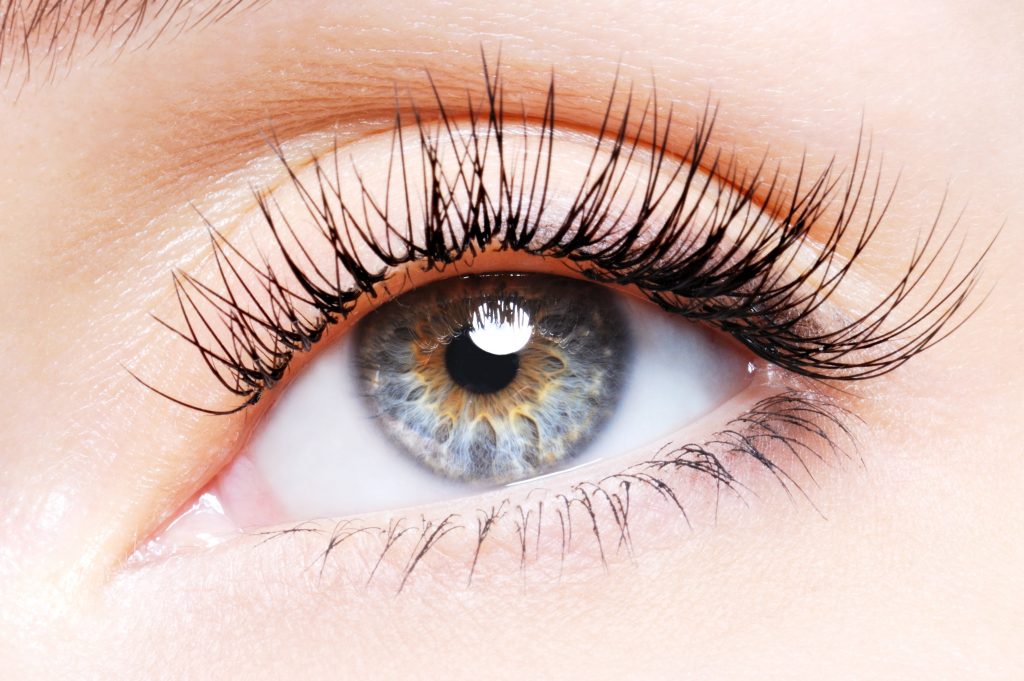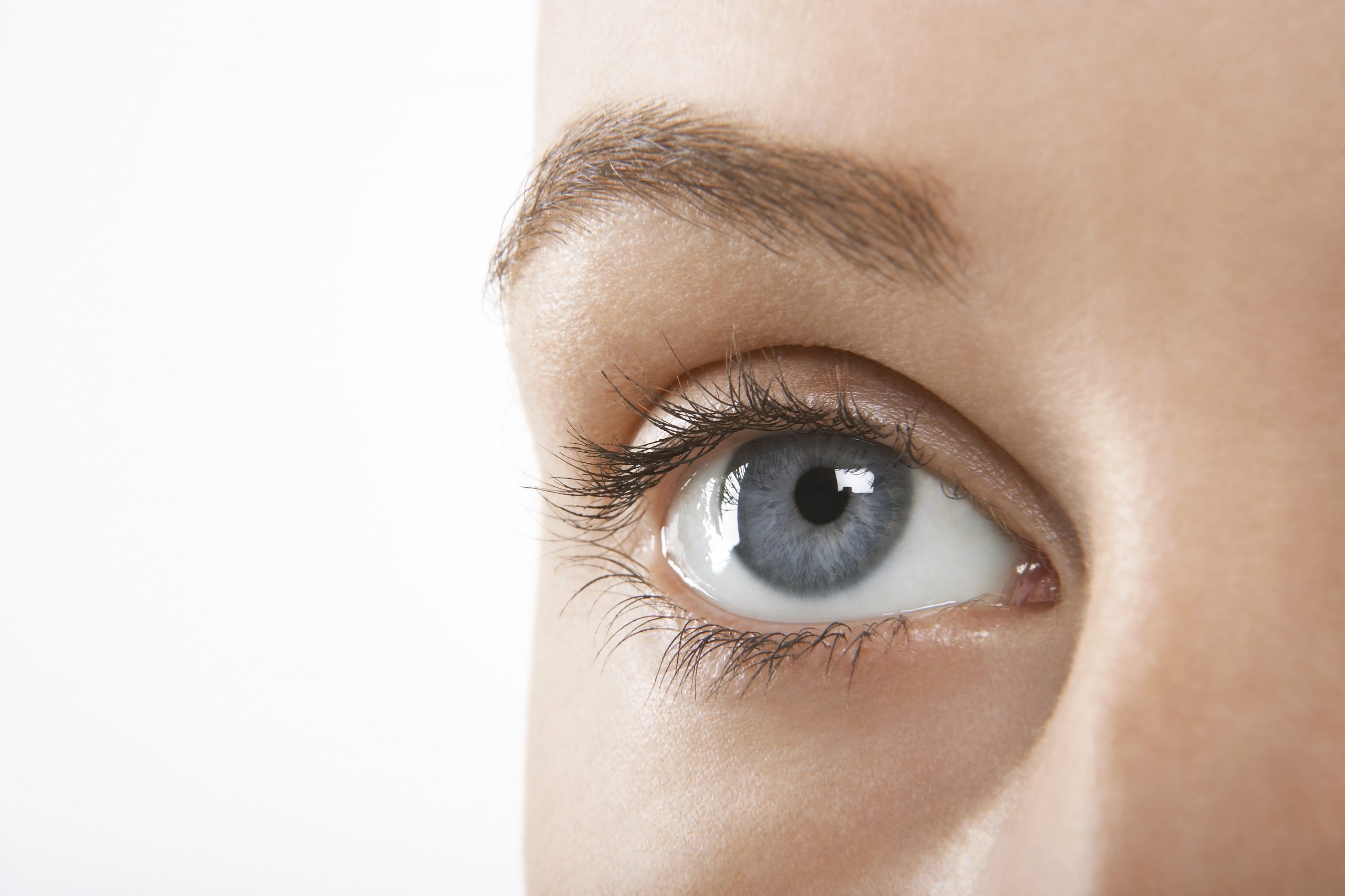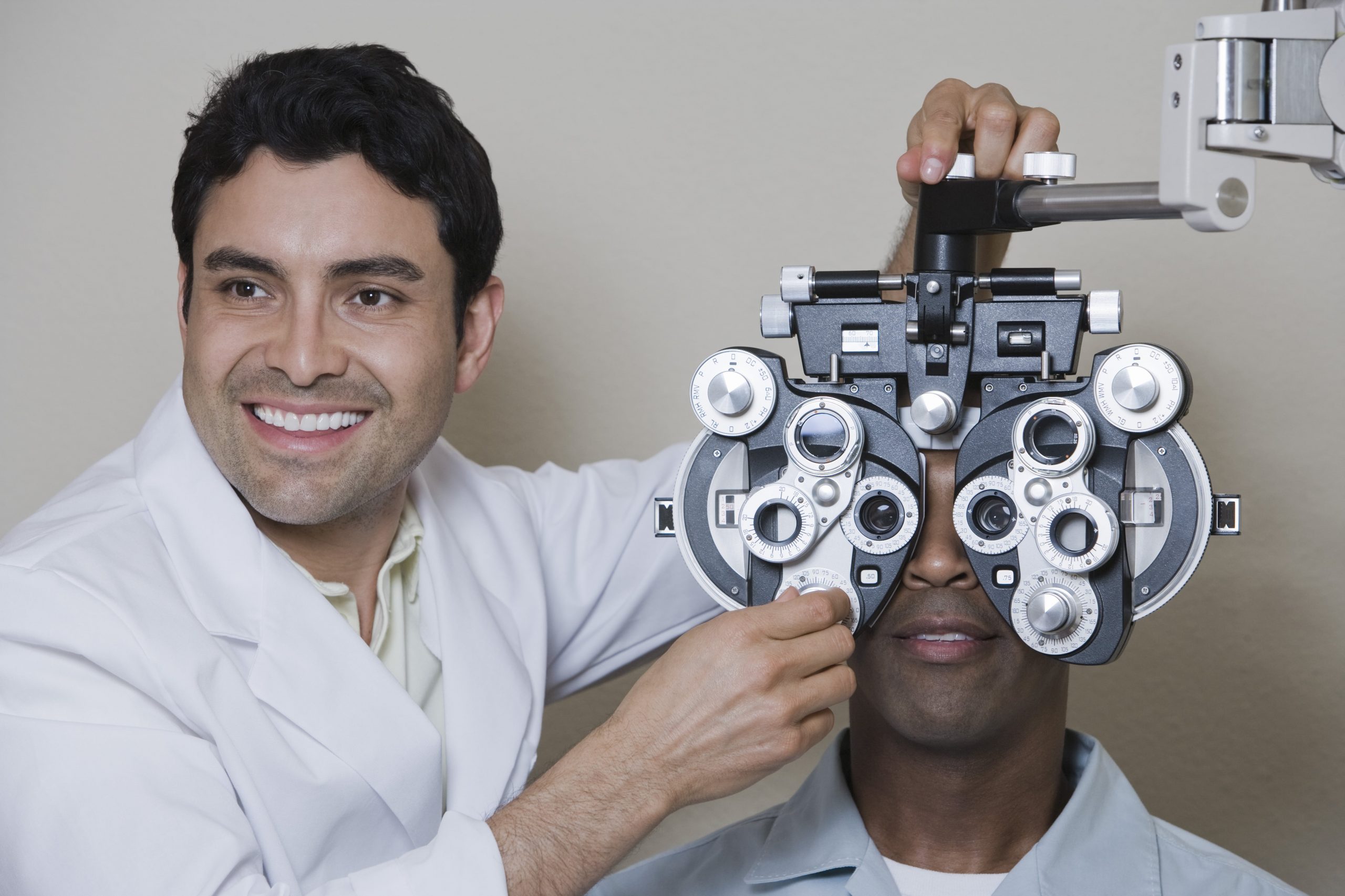Central vision loss is usually the result of damage to the macular area of the retina. It is the most devastating type of vision loss because it affects your ability to see detail. Things like reading, writing, driving, and being able to discern faces become very difficult. There are many diseases that can cause central vision loss, probably the most common is macular degeneration.
When you look straight ahead, the field of view in the center of your vision is called central vision. Peripheral vision, on the other hand, is what you perceive to the left and right when you stare straight ahead. While central vision only accounts for around 3% of our visual field, it allows us to make critical decisions such as determining distances and understanding details about things in our path.
The Macula
The macula’s primary job is to give sharp, clear, and straight-ahead vision. It is in charge of our entire center vision as well as the majority of our color vision. The macula is responsible for the tiny detail we see. Diseases of the macula, such as macular degeneration, cause loss of central vision because it is responsible for our center vision. When the macula is damaged, the ability to see objects clearly in the center of vision is lost. Because peripheral vision is unaffected by macula impairment, a person with macula damage can adjust to life and carry on with some daily activities, such as walking, without help.
The macula is an oval-shaped region near the retina’s center. The retina, which lines the back of the eye, is a light-sensitive layer. It contains 200 million neurons but measures only 0.2 millimeters in thickness. Photoreceptors in the retina absorb light and then convey that information to the brain via the optic nerve. Images pass through the eye’s lens and are focused on the retina, much like the film in a camera. These images are subsequently converted to electric signals and sent to the brain by the retina.
Macular diseases that cause central vision loss
Macular Degeneration (AMD)
There are two types of AMD, Dry (non-exudative AMD) and wet (exudative AMD).
The most common form of AMD is dry AMD (also known as non-exudative AMD), which affects 80-90 percent of AMD patients.
The accumulation of proteins in the macula leads the retinal cells above them to lose function, resulting in dry AMD. Drusen are the name for these protein deposits. The majority of people with dry AMD experience a gradual, painless loss of vision that worsens with time.
Wet AMD (also known as exudative AMD) is a more visually dangerous disease that affects 10-20% of Macular Degeneration patients.
Leaky blood vessels in the retina produce wet AMD. Fluids or blood may flow into the back of the eye from these aberrant blood vessels. Wet AMD patients often have more substantial visual loss than dry AMD patients. Wet AMD causes visual loss that is typically recognized by people. Wet AMD can cause abrupt central vision loss in certain people.
Diabetic Retinopathy
High blood sugar levels, which can damage the blood vessels in the retina, are a symptom of diabetes, which is becoming more common. Floaters, blurriness, dark patches of vision and difficulty detecting colors are all early signs of diabetic retinopathy. Diabetic retinopathy can cause central vision loss if high blood sugar levels continue to damage blood vessels in the retina.
Macular Edema
Fluid builds up in the macula, causing macular edema. As the macula swells and thickens, it distorts vision. Diabetic retinopathy, a disorder that can affect persons with diabetes, is a common cause of macular edema. Macular edema can arise following eye surgery, in conjunction with macular degeneration and cataract removal, or as a result of other inflammatory eye illnesses. Any condition that affects the blood vessels in the retina might cause macular edema.
Cellophane maculopathy
Epiretinal membrane (ERM), preretinal membrane, cellophane maculopathy, retina wrinkle, surface wrinkling retinopathy, premacular fibrosis, and internal limiting membrane disease are all terms used to describe macular pucker. ERMs are semitranslucent, fibrocellular membranes that grow on the inner surface of the retina and are avascular (containing few or no blood vessels). They usually cause no symptoms and can be simply viewed, however they can occasionally induce painless central vision loss and metamorphopsia (visual distortion). The macula, which is the core region of the retina that lets us identify fine detail for reading and recognizing faces, is usually the most symptomatic when ERMs impact it.
Macular hole
Central vision loss can be caused by holes and rips in the macula. Objects in center vision will appear fuzzy, distorted, or wavy as a macular hole develops. A dark spot or blind area forms in center vision as the macular hole deepens. Side vision is unaffected by macular holes.
Artery occlusion
A central retinal artery occlusion occurs when blood flow to the retina of one eye is blocked. It frequently results in a loss of vision in one eye. If you’re older or have high blood pressure, glaucoma, or diabetes, you’re at a larger risk. If your blood is thicker and stickier than usual, you’re at a higher risk.
Stargardt’s Disease
Stargardt’s disease is similar to AMD in that it is a hereditary disorder rather than one that develops as a function of aging. Children, not adults, are affected by this type of macular degeneration, which causes gradual visual loss. It’s extremely rare, affecting only about 1 in 10,000 people.
Cataracts
Cataracts are foggy patches on the lens of the eye that cause vision to become cloudy, fuzzy, and glare-sensitive. While cataracts can damage the full field of vision, they are frequently connected with macular degeneration and can even obscure macular degeneration-related vision loss symptoms. Patients with severe cataracts may experience a temporary loss of central vision that improves after surgery.
Symptoms
Symptoms of central vision loss include a decrease in acuity or detail, metamorphopsia ( distorted or wavy vision, lines or rows of letters won’t look straight), blind spots, or scotomas. Depending on the underlying cause the symptoms may be sudden or very gradual.
The Amsler grid is used to examine for wavy or distorted lines, as well as missing parts of the visual field.
- Tape this sheet to the wall at eye level, where the light is even and there is no glare.
- Cover one eye with your reading glasses.
- Fix your gaze on the black dot in the center.
- Try to spot any warped or missing lines while keeping your attention focused.
- Make a note of the flaw on the chart.
- Separately test each eye.
- Make an appointment with your eye doctor right once if the distortion is new or has worsened.
- Each time you test, keep the Amsler’s Chart at the same distance from your eyes.
Treatment
Treatment is mostly determined by the underlying cause. Wet AMD is the most prevalent cause, and it requires anti-VEGF therapy, which involves injecting an anti-VEGF medicine into the eye on a regular basis. Diabetic retinopathy is treated with strict blood sugar control in mild cases; severe cases of diabetic retinopathy require laser treatment or surgery. Macular holes can sometimes heal on their own, but for better central vision, surgery is usually required. Steroid medicines are used to treat macular edema, but cataracts and macular pucker require surgery to restore central vision.
Frequently asked questions about central vision loss
Q. Can central vision loss be reversed?
A. Depending on the underlying condition central vision loss may or may not be reversible. Conditions like a macular pucker and are fixed and return the vision to normal. Conditions like Wet macular degeneration usually cause at least some permanent vision loss.
Q. Can I still drive with central vision loss?
A. Most states require at least 20/40 acuity for an unrestricted driver’s license. However under certain restrictions or with the help of a low vision aid like bioptic telescope glasses you may be able to continue to drive.
Q. If I’m seeing distortion or wavy vision what does that mean?
A. Metamophopsia or wavy vision can be caused by several macula conditions affecting the central vision. Fluid or edema under the retinal will cause the retina to be elevated causing this problem. A macula pucker may also be responsible.
Q. Will glasses fix central vision loss?
A. While glasses will help correct any refraction caused by the normal shape of the eye. They will not correct central vision loss caused by a disease. Strong magnifiers or low vision aids may be needed if the loss is great.
Q. Are there any new technologies or devices to help people with central vision loss?
A. There are many new wearable electronic devices such as esight that aid people with vision loss as well as optical devices such as magnifiers and telescope glasses.
Q. Is someone with central vision loss considered legally blind?
A. Many conditions that may cause central vision loss can lead to legal blindness. However, most conditions if caught early enough and treated can be controlled and the progress slowed preventing becoming legally blind. To be legally blind the central acuity needs to be 20/200 with the best correction.
Q. Who are at most risk of having central vision loss?
A. The most common cause of central vision loss is macular degeneration which affects the aging population and smokers. Many of the other diseases which cause it has to do with overall health such as diabetes, hypertension, and hyper cholesterol. So those at risk for them are overweight and sedentary. In more rare cases such as macular dystrophies children can suffer from it.
Getting help
If you are suffering from any type of vision loss you should get to your eye doctor right away. Go see your optometrist or ophthalmologist, they are the most equipped to diagnose your underlying problem that is causing your vision loss. They can then refer you to a retinal specialist if needed or possibly a cataract surgeon etc. Most primary care physicians don’t have the equipment or the training to properly diagnose severe eye conditions.
If you have already been seen by the specialists and are experiencing permanent central vision loss then a visit to a low vision doctor may be needed. Low vision specialists can prescribe optical devices like telescope glasses or electronic low vision aids to assist you in doing your daily activities and maintaining your independence and productivity. Low vision occupational therapists can help in setting up your house and work environment to keep you safe and organized.
LightHouse for the Blind
For people of all ages who are visually impaired or blind, Lighthouse for the Blind provides a complete, integrated variety of services, including low vision care and rehabilitation, career development training, and employment, to enable them to remain independent.















